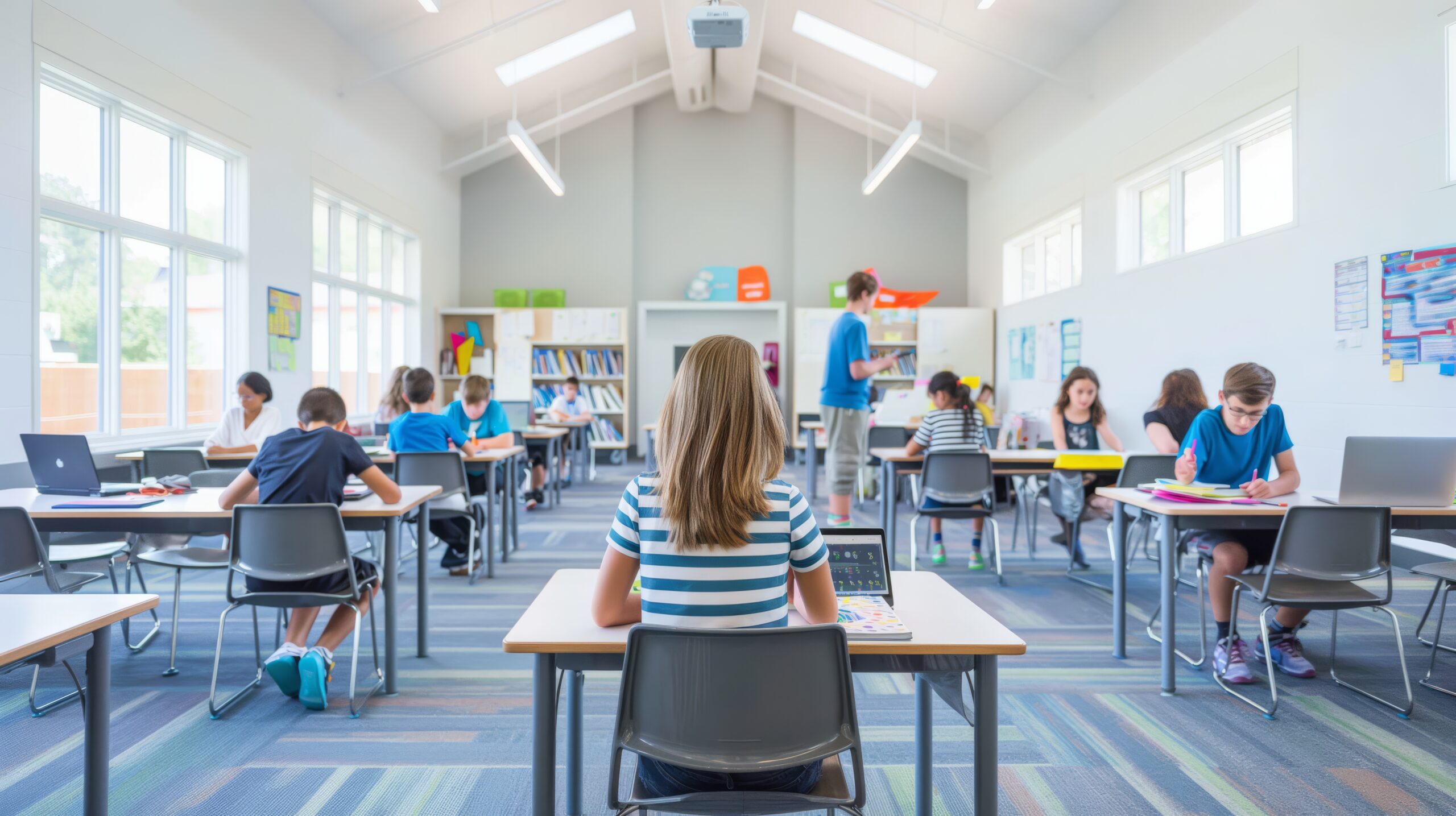When it comes to supporting students with special needs, you might hear the terms “accommodations” and “modifications” thrown around a lot. But what do these terms really mean? And why is it important to understand the differences between them?
In short, accommodations and modifications are both strategies used to help students succeed in school, but they serve different purposes. Understanding these differences can make a big impact on how we support our students. Let’s break it down!
Definitions
Accommodation
An accommodation changes how a student learns the material. It doesn’t alter the content or what the student is expected to learn. Instead, it helps students access the same curriculum as their peers. For example, a student with dyslexia might listen to an audio version of a book while the rest of the class reads the same book.
Modification
However, a modification changes what a student is taught or expected to learn. This means that the curriculum and learning outcomes are different for the student receiving modifications. For instance, a student might be assigned shorter or easier reading assignments compared to their classmates.
Classroom Instruction
Accommodations
Let’s look at how these concepts play out in the classroom. Accommodations allow students to learn the same material as their peers. Here are some examples:
- Audio Books: A student with dyslexia can listen to an audio version of a book while the rest of the class reads the same text.
- Seating Arrangements: A student who has trouble focusing might sit near the teacher to help minimize distractions.
The goal here is to help students meet the same expectations as their classmates.
Modifications
Now, modifications come into play when a student is significantly behind their peers. Here are some examples of modifications:
- Simplified Reading Assignments: A student may be assigned a shorter text or a simpler version of the reading material.
- Different Homework Tasks: Instead of the regular homework, a student might have different assignments that are easier or more manageable.
The goal with modifications is to adjust the curriculum to better fit the student’s current abilities.
Classroom Tests
Accommodations
When it comes to testing, accommodations can also vary. For example:
- Spellcheck: A student with writing difficulties might use spellcheck while taking notes during class, but not during a spelling test.
- Extra Time: A student may be allowed extra time to complete a test if they need it.
These accommodations help students demonstrate their knowledge without changing the content of what they are being tested on.
Modifications
In contrast, modifications in testing often mean that a student covers less material or different material altogether. For example:
- Reduced Material Coverage: If a spelling test requires the class to study 20 words, a student with modifications might only need to study 10 words.
- Different Lists: There could be two different lists of spelling words, and the student with modifications is tested on a simpler list.
Standardized Testing
Accommodations
For standardized tests, accommodations can include:
- Extra Time: Students may receive additional time to complete the test.
- Computer-Based Testing: Some students may take the test on a computer, which can help with ease of use.
Modifications
On the flip side, modifications for standardized testing might involve alternate assessments. This means that the questions may be fewer or different from the regular test. The results are also interpreted differently, so it’s important to understand how this might affect the student’s academic record.
Special Classes (PE, Music, Art)
Accommodations
In special classes like PE, music, and art, accommodations can be very helpful. For instance:
- Extra Time for Learning Instruments: A student might be given more time to learn how to play an instrument.
- Alternative Project Formats: In art class, a student may be allowed to complete a project in a different way that suits their abilities.
Modifications
Sometimes, modifications are necessary in these classes. For example:
- Reduced Physical Activity Requirements: A PE teacher might reduce the number of laps a student needs to run.
- Simplified Music Reading Tasks: A music teacher might not require a child to learn how to read music.
Examples of Accommodations and Modifications
Accommodations
Here are some common examples of accommodations:
- Preferential Seating: Sitting near the teacher or away from distractions.
- Visual Aids: Using pictures or diagrams alongside verbal instructions.
- Calculator Use: Allowing students to use calculators for math assignments.
- Reduced Homework: Assigning fewer problems to complete.
- Frequent Breaks: Allowing short breaks during instruction.
Modifications
And here are some examples of modifications:
- Limited Response Choices: Providing multiple-choice answers instead of open-ended questions.
- Adjusted Grading Criteria: For some assignments, aspects like spelling or grammar might not count against the grade.
- Leveled Assignments: Assigning work appropriate for the student’s current level of understanding.
Decision Process for Accommodations and Modifications
Role of IEP and 504 Plans
Students who have an Individual Education Plan (IEP) or a 504 plan will likely have accommodations. Some students with IEPs may also have modifications. When a child is determined eligible for an IEP, the team will use evaluation results and input from teachers and parents to decide which accommodations and modifications to put in place.
Involvement of Teachers, Parents, and Evaluation Results
It’s a team effort! Teachers, parents, and specialists all play a role in deciding what accommodations and modifications will best support the student. For example, a child with a slow processing speed may get extra time to complete assignments, while another child with an intellectual disability may have modifications to their work.
Implementation in the Classroom
For Accommodations
When implementing accommodations, it’s important to be consistent with the IEP. Having a checklist can help ensure that you’re providing the necessary supports. Remember, even if a student doesn’t use their accommodations, you still need to offer them. For instance, if a student has the option to use a graphic organizer for writing, you must provide that option.
For Modifications
If a student has modifications, you’ll want to collaborate with special education teachers to ensure the student’s work is appropriate. Adjustments to grading and testing should also be made according to the student’s needs.
Grading and Adjustments
Accommodations
For students with accommodations, you’ll grade their assignments using the same criteria as their peers. If a student uses a graphic organizer or speech-to-text software, that’s fine, but the expectations for the assignment remain the same.
Modifications
For students with modifications, grading will be adjusted based on their individual needs. This means that the expectations for what they produce may be different from their classmates.
Common Misconceptions
It’s important to clarify the differences between accommodations and modifications. Many people use these terms interchangeably, but they are not the same. Accommodations help students access the same curriculum, while modifications change what the student is expected to learn. Both strategies are essential for providing individualized support.
Conclusion
Accommodations help students access the same material, while modifications change what they learn. Both play an important role in helping students succeed in school.
Tailored support is key to ensuring that every student has the opportunity to thrive. By working together, we can create an environment where everyone can succeed.




